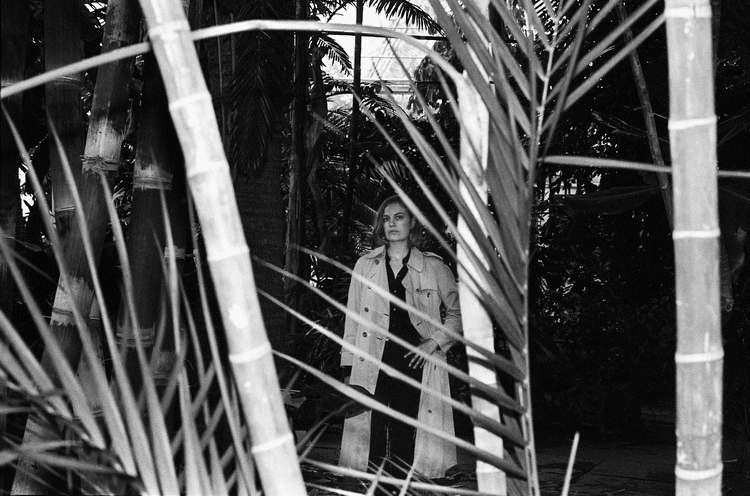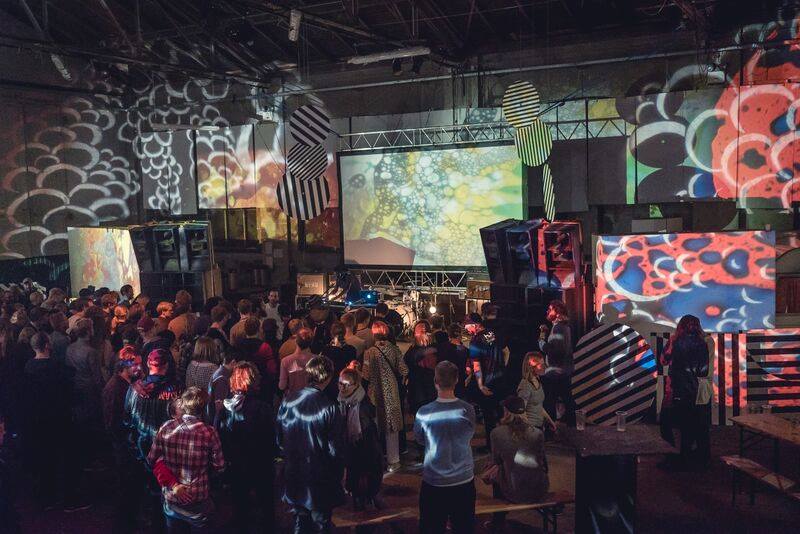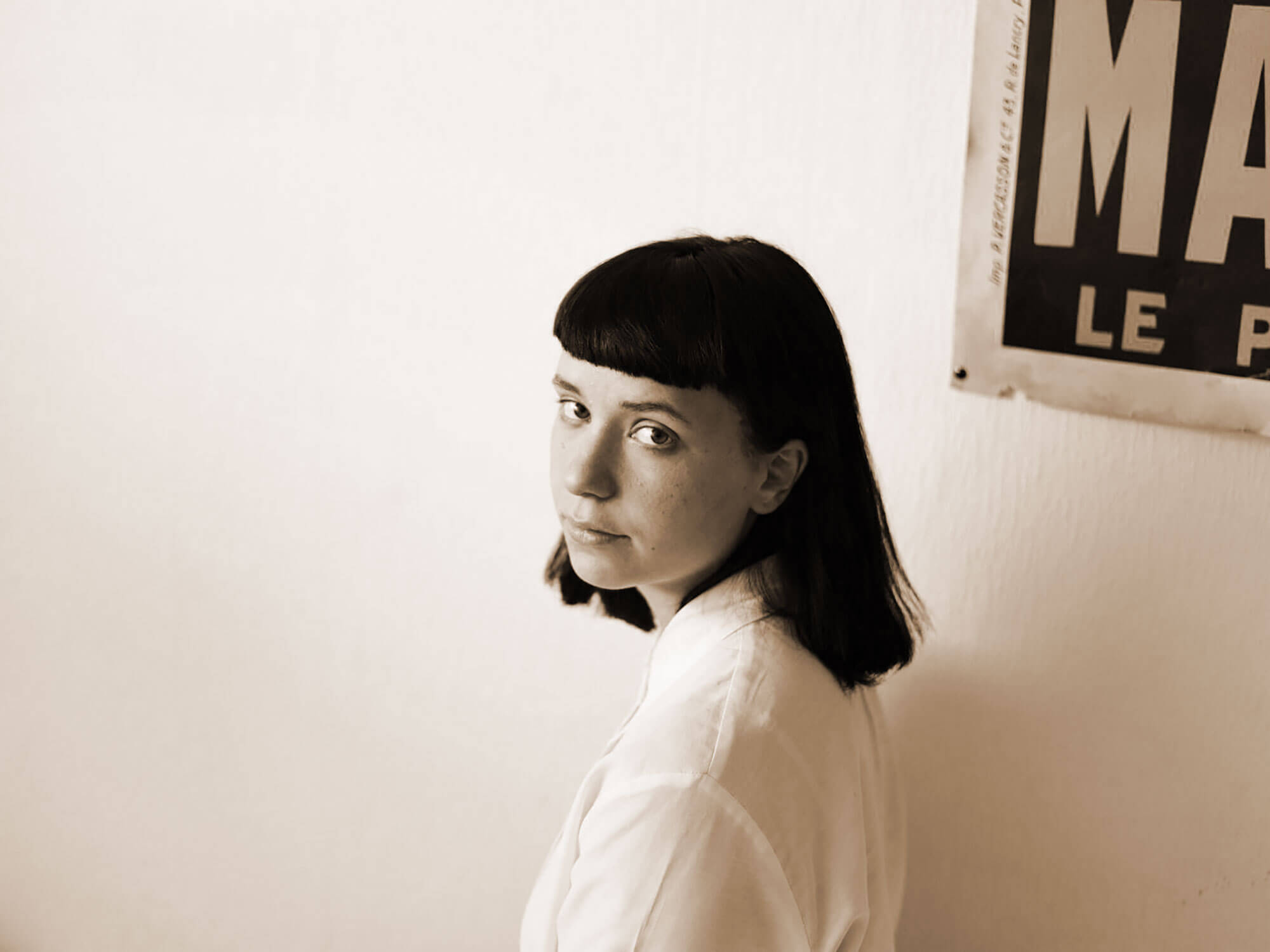CTM – Walking around blinkered, putting stones into the mouth (interview)

By Mette Slot Johnsen – foto: Albert Grøndahl
A couple of weeks ago I went to see CTM play a show in London, starting off a night of Nordic music, on a Thursday night. The venue was small and Caecilie Trier and Malthe Rostrup sidled on to the stage on the back of a particularly hyper electro track. The room fell quiet, and without a word the music started. 40 minutes later, after a set of Trier’s recent EP, “Suite For a Young Girl”, and a few other songs, the room was still remarkably quiet. Until the crowd knew it was definitely finished, no one disturbed. This is pretty special, for London on any night, let alone the one before the weekend’s first hangover.
Before the show I had sent Caecilie Trier some questions. Her answers are shedding light on her moods and methods in relation to “Suite For a Young Girl” but also giving food for thought as we can look forward to new music which may arrive in time for spring to wholeheartedly set in.
P/A: You are in your second formal music conservatory education, on top of the many years you’ve spent playing music before starting in the conservatory. Do you think it is necessary or advantageous to learn how to do things ‘by the book’ in order to constructively break the rules?
“I remember in an interview John Cage is speaking on this subject and he mentions Demosthenes. He was a Greek statesman in ancient Athens and he wrote speeches for a living, he was an orator. Demosthenes decreased his ability to speak by putting stones into his mouth. Having to overcome the obstacle of speaking with the stones in his mouth, he learned to speak in a very beautiful way.
I actually finished my studies, but yes, I did study at both conservatories here in Copenhagen, two very different schools. I don’t think anything is necessary, I don’t think that you need to learn how to do things by the book to break the rules. There are so many different books in all the scenes, some very heavy books with rules for the un-established areas as well, things get conventional pretty quickly.
Anyway, I would rather put it this way, that studying the masters is fruitful. At the classical conservatory that was my favourite class, the mandatory music history and oeuvre analysis. It is good to know your kinship with the history, even though you hate it, and there are great reasons to do so, and to move it too, you are standing on its shoulders. I get a bit scared that we forget the history of music, just like it is very scary that we seem to forget our history in general, at the moment that is so obvious regarding what is going on in Europe now, the refugee politics etc. It is not long ago, the great wars that everybody thought people would learn from. One thing is for certain, mankind is stupid. The history of every subject, each craft and science and whatever is precious, and so is music history.
But of course you don’t need to go to one of those established schools to study these things. You can do just as fine and perhaps even better on your own if you are curious and persistent. The schools won’t make you learn what you need to learn. They won’t stop you either. But you can easily get in your own way, whether you study in an established school or by yourself. I still think the best answer was the Demosthenes example, working with obstacles. And what you learn usually at some point becomes just as much an obstacle as an advantage. It is so much fun in the beginning, right? So you find ways to start all over again and again.”
P/A: There is a new significantly more playful and experimental direction in your music. What has affected and inspired the new sound?
“This piece of music (“Suite For a Young Girl”, ed.) is like a collage. There was a different method of letting the lyrics lead the way. So I made the lyrics first and then went along, not thinking of it as making songs, more like making a collage topography, an illustration to the story.“
P/A: Bearing in mind Else Marie Pade’s recent death and David Bowie’s, both purveyors of musical boundaries in each their way: How do you experience the experimental elements creeping into mainstream music production? And experimental music in itself becoming more visible in the general music landscape?
“I don’t feel that well informed about the general landscape, I like to walk around blinkered. But of course I do sense that. I don’t believe it is something new, though.
The commercial music productions certainly bleed into the less lit areas of music and vice versa. Hasn’t it always done so? Of course there is a smaller gap between the different levels that used to be divided by economics very short time ago. I think of it as principles, that you can use to animate the idea or concept you want to do. So there are some things that you know by heart how works in a pop song, because you simply heard so many pop songs, and some other things, for example some very different curves of dynamics and different fundamental general structures from some classical composer that you like, that you pick out. And then you do the opposite of those principles, and maybe it feels like something interesting is going on. Some random things should be going on, while you are very busy keeping an eye on the ball — that is how I like to work. Always be very clear about what is the leading motive in every movement.
One should feel strongly for everything going on, every element, and one should not be afraid to delete. So I delete a lot, pieces and voices, like peeling an onion, but it is not necessarily the core you want to end up with. Maybe you want something that is just hanging in the air, something very fluffy. But anyway, around this idea and the path that you want to follow, you make the music. All these elements of experimental or mainstream productions creeping in are secondary. They are means to an end. Maybe I am being contradictory now, because the formal choices are also the core in music, especially on this record, but that’s just how I feel, I don’t really have a consistency in my methods anyway.”
P/A: You use a lot of everyday sounds, which makes the album feel very personal, and I found it very moving. Did you set out to make an intimate record?
“For me there was no goal to make an intimate piece of music. The starting points are outside of me, and it is not music generally centred around my personal emotional insights, but I understand — that interpretation makes perfectly sense, because when you record something in a studio with some people playing, and some people taking care of the technics, you make other choices because you are among other people, cooperating. You just wanna let go, to see where people are going rather than take control. That was not the case here, I was alone working on it in random locations, a desk here and there, travelling some of the time, I also spent more time alone. And I thought of it as something I wasn’t going to “use”, just an experiment for the sake of the experiment. Or maybe that’s the intimacy, more like someone talking to herself.
I took the role of the narrator, and the narrator has many faces and tells this story, from three different angles, in my opinion, there are these three characters. I also thought of it as a piece addressed to both eyes and ears. Regarding the sounds of water and a ball game, I wanted that specific moment to take place outside where a ballgame is going on. And another moment the narrator is watching someone taking a bath, in a bathtub putting the foot under the faucet. Then I thought there was no need to beat around the bush, but to have the real sound of this. I thought it would make sense to do something 1:1. Maybe some other passages or elements are more open or at least point in several directions at the time. But still I look at it as every pull makes a new direction, very functional, kind of like functional harmonics which I like. Also this is contradictory, because it feels like taking a walk, and you don’t really know who you are going to meet or what you will see.
Right now I am looking out the window of a train and the light is completely different from yesterday, it is kind of golden, and the trees and soil that looks greyish and rather cold, at this time of year, looks warm. It looks like it is warm outside, even though there are thin white frost layer some places on the ground. So that is also something to use when producing, to change the light setting slightly, so that you get confused. You thought they were talking some place outside, but suddenly the ambiance changes, they are in a small room, or the accompanying sound change underneath, to keep the listener suspicious of what is going on.”
P/A: The instrumentation is a lot less straightforward sounding this time, and it seems to be quite a departure from the former CTM release, “Variations”. The productions are also beautifully layered. Did you do all the recording and production yourself?
“Yes. I did the recordings and production by myself. And then I also got help. After finishing the production I took it to Aske Zidore, helping to make room for everything, balance things if possible, we were mixing together for two days or something like that. I think Aske has a great and very elegant intuition, he is such a star.
They are all collages of samples, MIDI, some audio recordings, quite simple arrangements. I mean there are not too many tracks in each of the pieces of the suite, and there are a lot of odd numbered periods etc., almost no repetition in the lyrics. But the repetition is well represented in the instrumentals around the vocals.
The last track, “Escorted”, was the only one recorded live and together with other people – Andreas Führer played guitar, Asger Hartvig played piano and saxophone, I played piano, and we recorded all together live. So that track is very different from the others, it opens up the door to a new space. Like the lyrics do, a song that takes place in a state of zero gravity freedom and facing immense restrictions at the same time. It was very easy and delightful to make this recording of “Escorted”. Asger and Andreas are so great.
Then at last, Malthe Rostrup, the pianist with whom I later started playing live CTM concerts as a duo, came by and improvised on the piano on top of everything, from the start until the end. It was the first time he heard the music too, so the idea was to make a whole new space, a level where you hear the pianist play and listen to the suite, like a spectator, like you.”
P/A: Lyrically the themes seem more abstract and fragmented than on “Variations”, but perhaps more along the lines of Valby Vokalgruppe. Did you use a different method when writing the new songs?
“The greatest difference is that this piece of lyrics was made as a whole first of all, the lyrics were written and then I made the recordings, the compositions. So the lyrics showed the way. I haven’t done that before. And the lyrics aren’t written with any structure in mind, so the structures of the pieces, the periods of bars, everything is odd numbered and linear rather than cyclical.”
P/A: You’ve talked elsewhere about being inspired by Nabokov’s “Lolita” , Gertrude Stein and also being inspired by a new environment. Did any other factors affect your themes and the wording?
“I also quote my own writings, notes here and there, and there is a Rumi quote (in “La Mer” — “It’s better to be prey than the hunter”). Also I had discovered a Gourdijeff dance, a Korean dance company of ten women or so, dressed in rural working clothes. They are on a stage, divided in three sections. In the middle a woman is whirling throughout the whole piece. On both sides a simple choreography is repeated by the other women. They stretch to stand on their tiptoes, they lift their arms etc., subtle movements. The score is a piano piece by Gourdijeff/de Hartmann. I was watching that video a lot, I think that was an important factor. It has a mesmerizing gentleness, it is very dramatic but at the same time it feels like a vacuum, like time has stopped. Also, I think I work very slow. Maybe I do a lot of things, but inside me it feels very slow, I am almost waiting, and I had been waiting for a couple of years at that time. I had not been interested in the things I made, for a long time. I made stuff, but I did not have a feeling of being on the track. That is very important, to be curious when you investigate this field you end up in.
Oh, and “Return of the Hunters’ is of course heavily influenced by the Breugel painting “Return of the hunters/Hunters in the snow”. The first track is taking place inside that picture, I thought.”
P/A: Finally, I’m curious about your visuals. There has always been a sense of bodies and movement in CTM, and the dancers in the videos of course heighten this feeling. Are the different musical elements calls and responses; reflecting your own physical reaction to the music?
“I think that started with the video I described above, the whirling and dancing that I was looking at. I like to think of it as a piece of music for both eyes and ears. It is true, there has somehow been a theme.”
Info: “Suite For a Young Girl” was released on Tambourhinoceros in late January.



